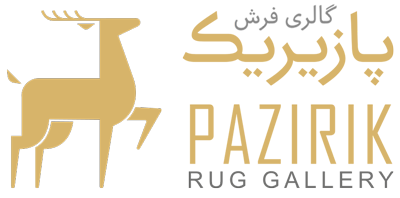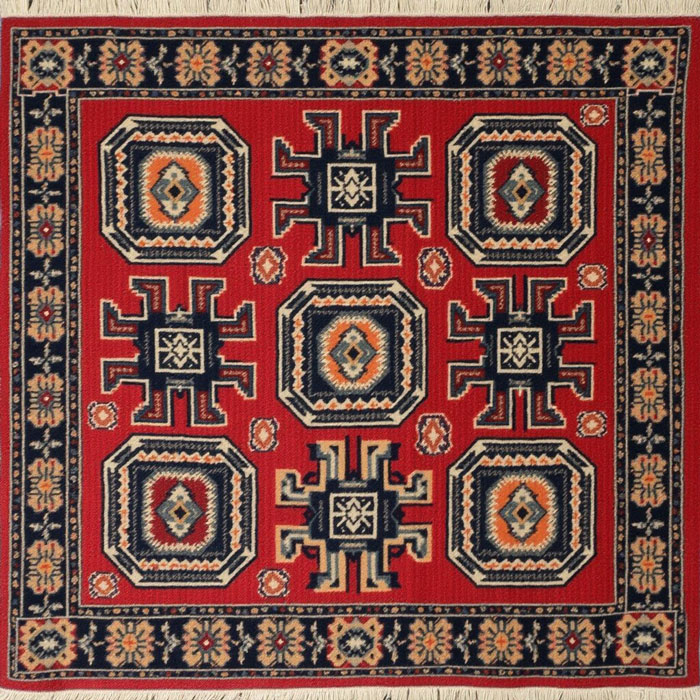Persian Urban Rugs are the ultimate symbol of Iran's luxurious art culture, intertwining history, culture, and spirituality. Each motif and design meticulously incorporated in these rug is a testament to the grandeur of this land's traditions and the craftsmanship of the weavers as narrators.
By observing these designs and symbols closely, one can unearth more of the history and cultural backgrounds of each of these rugs, especially those from city centers renowned for their distinctive designs.
Historical Overview of Persian Rug
Iranian carpet weaving is an art that dates back over 2,500 years. The oldest existent carpet, the Pazyryk Carpet, discovered in 1949 in Siberia, dates back to the Achaemenid era, testifying to the ancient history of this art.The Persian carpet-weaving art under the Safavid dynasty had reached incomparable heights, and extensive workshops were established in such cities as Isfahan, Tabriz, and Kashan. This period saw the introduction of natural and religious themes, contributing to the rug's beauty and symbolic wealth.
Common Symbols and Patterns in Urban Persian Rug
Boteh (Paisley)
One of the most popular Persian Urban Rug motifs is the Boteh, which resembles a teardrop or a flame that curves. It is symbolic of life and fertility and also typically interpreted as a representation of a flame or the universe. The motif also occurs in rug from regions such as Kashan, where its intricate designs reflect the region's established weaving tradition.
Tree of Life
Tree of Life pattern represents truth, wisdom, and the direct line between the earthly and the heavenly. It also represents the connection between the physical and spiritual worlds and is a common pattern in Isfahan rug, reflecting the city's philosophical and artistic inclinations.
Lotus Flower
Lotus Flower is a representation of rebirth and timelessness. In Persian rug, it represents eternal life and is usually worked out in detail to depict the skill of the weaver and the cultural significance of rebirth and purity.
Simurgh (Phoenix)
The Simurgh, or Phoenix, is a mythical bird symbolizing paradise and immortality. Its depiction in rug signifies aspirations of eternal happiness and is an expression of the rich tapestry of Persian mythology incorporated into textile art.
Dragon
In Persian Urban Rug, the Dragon represents strength and power. The mythical creature is typically presented as a guardian, with protection and valor themes, especially in rug from regions that have been under the impact of ancient Persian legend.
Lily
The Lily motif represents religious freedom and beliefs. In Persian rug, the occurrence of this motif signifies freedom and liberation, which indicates the cultural emphasis on intellectual and spiritual liberty.
Lozenge (Diamond Shape)
The Lozenge is a typical tribal rug motif representing femininity. Two overlapping lozenges often depict a man and a woman, representing themes of partnership and unity, as is common in rug from tribal regions.
Mihrab (Prayer Niche)
The Mihrab design is the entrance into paradise. The depiction of this in rug testifies to the religious aspirations of the consumers and weavers and forms a focal point in prayer rugs, foregrounding the inbuilt religious beliefs in Persian culture.
Ram's Horn
The Ram's Horn is a motif of bravery and strength. The pattern is prevalent in Turkmen rug, representing endurance and resilience, the traits highly valued in nomadic cultures.
Fish
The Fish pattern in Persian rug is a motif of fertility and life. The "Fish in Mesh" or "Herati" pattern is one of the most elegant repeating patterns, reflecting the value of life and water in Persian culture.
Symbols and Carpet Origins
The designs and motifs inherent in Persian rug have profound information about their origin and provenance.
For instance, the Boteh pattern is utilized profusely in Kashan rug, while the Herati pattern is employed predominantly in Tabriz rug. The Tree of Life pattern is also a widespread design in Isfahan rug, each resonating with the unique cultural and artistic heritage of these urban cities.
Influence of Culture and Religion on Symbols
Culture and religion have impacted Persian rug patterns and symbols to a great extent. For example, the use of geometric patterns in Tabriz rug reflects the country's adherence to Islamic art guidelines that avoid representational representations.
Conversely, the Kerman rug floral patterns reflect the love that the region has for nature and beauty, embracing Persian poetic traditions.
Deciphering Urban Persian Carpet Designs
City Persian rug, especially from metropolitan areas such as Tabriz, Isfahan, Kashan, and Kerman, are famous for their complex designs and exquisite craftsmanship. Such rug usually contain intricate patterns that represent the advanced tastes and cultural histories of their places.
FAQ: Frequently Asked Questions About Symbols in Persian Urban Rug
What do the symbols in Persian rug mean?
The designs of Persian Urban Rugs are extremely symbolic and tend to represent cultural, religious, and historical aspects.
The Tree of Life, for example, represents the conjunction of material and spiritual existence, whereas the Boteh (Paisley) motif represents fertility, eternity, and development. Immortality is symbolized by other motifs like the Simurgh (Phoenix), while the Ram's Horn stands for strength and courage.
Why are religious motifs like the Mihrab used in Persian rug?
The Mihrab (Prayer Niche) pattern is a religious design representing the gateway to heaven. It is very typical of prayer rugs and signifies the religiosity and piety of the weaver. This pattern expresses the importance of spirituality and religion in Iranian life.
Are the symbols in Persian tribal rug different from urban rug?
Yes, tribal rug typically use more geometric, uncomplicated design than the highly detailed and refined pattern of urban Persian rug. However, most of the symbols intersect, since Lozenge forms symbolize femininity, but the style of weaving, complexity, and local interpretation may differ.
In conclusion
Persian Urban Rug is far more than a decoration; they are living canvases imbued with centuries of cultural, spiritual, and artistic heritage.
Every symbol and motif, whether the elegant Boteh, the more profound Tree of Life, or the mythological Simurgh, contains meanings within meanings that tell of the values, beliefs, and history of the land wherein the carpet was woven. In interpreting these motifs, we have a window onto the identity and worldview of Persian artists and communities.
Being familiar with these symbols not only increases our appreciation of the craftsmanship but also connects us to the ancient lore embedded in every strand. Whether collector, enthusiast, or just admirer, familiarity with the stories behind the designs enriches the experience of owning or observing a Persian carpet.
The next time you encounter a Persian city carpet, pause and reflect on the underlying symbolism behind its elaborate designs—you'll find that each motif has a tale to share of tradition, resilience, and beauty that transcends the centuries.

